

Here is the history of Grange Farm - the oldest building in the area, and which gives Grangetown its name. It includes a new story about restoration work on the house over the last 15 years which has uncovered more artefacts and knowledge about its history. Return to Part One or Part Two
Many thanks to the current custodians - Fiona, Nigel and Lily - for sharing their story of the last few years.
'Our grange near the town of Kaerdiff'
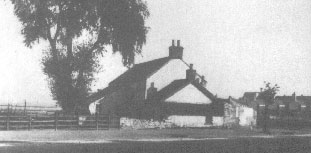
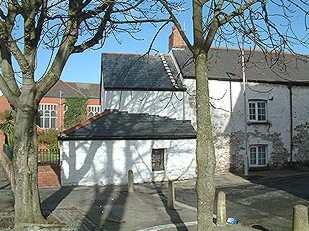
Grange Farm in the 1890s and today.
Grangetown's oldest surviving building - Grange Farm - has a history dating back 800 years to medieval times.
The Cistercian monks of Margam Abbey (near modern day Port Talbot) established
a grange to farm the land in the early 13th century, off what is modern day
Clive Street. It was an outpost, and legend has it that they were sent there
as penance for drinking and gambling! Moor Grange was reputedly built at some
time between 1193 and 1218 and ran to 100 acres. The monks had been granted
land at Margam in the mid 12th century, with the abbey founded with the help
of Robert, son of King Henry I and by the end of the century Henry Bishop of
Llandaff had granted to the abbey all land nearby "in more de Kardif," in return
for an annual rent.
The Grange of Luquyth (Leckwith) by the end of the 15th century had 400 sheep
and 100 cattle and the abbey leased out the farm through Jasper Tudor (Henry
VII's brother) to Griffith ap Meuric. The records also showed 7s 1d was paid
for taking "17 loads of hay from the abbot's Grange" to the lord in
Cardiff.
Lewis ap Richard was the last farmer to lease from the abbey. His agreement
from the monks stated - "know ye that we have delivered to Lewis ap Richard,
esquire, our grange near the town of Kaerdiff, commonly called More Grange,
with the end term of 90 years. " £6 13s and 4d was payable on the feast
of the Anunciation, along with 4s a year to the Bishop of Llandaff and two acres
of hay to the abbot. Lewis was also responsible "to suitably repair and
maintain" the grange, house, sea walls, weirs, ditches and fences.
But with the dissolution of the monastries by Henry VIII, Abbot John of Margam
was pensioned off and the farm passed to the Lewis family (of Van, Caerphilly)
in 1537. In 1547, Edward Llewelyns was farmer with the same rent Lewis ap Richard
had paid. By 1595, rent had dropped to 44 shillings a year, showing the farm
had declined somewhat - "messuage (house and outbuildings), one barn,
one parcel of land, meadow and pasture called the Graing de Moore." 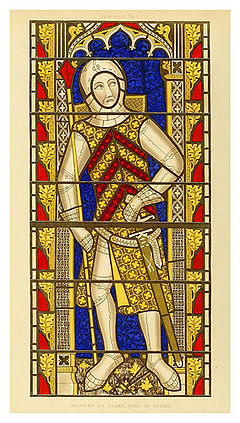 According to a short history of Grange Farm, put together from local records
in the 1940s by J Cleary Martin, details of the land emerge again in 1329 in
the reign of Edward III. Noblemen sitting at a court at Cardiff Castle heard
a land dispute involving the Abbot of Margam and the recently departed Lord
of Cardiff, Gilbert de Clare, killed at Bannockburn. The abbot had a dispute
with Clare (pictured right) over land at Kenfig (near modern day Bridgend)
but the judgement in the monks' favour also mentions "the grange on the moor
near Kardif."
According to a short history of Grange Farm, put together from local records
in the 1940s by J Cleary Martin, details of the land emerge again in 1329 in
the reign of Edward III. Noblemen sitting at a court at Cardiff Castle heard
a land dispute involving the Abbot of Margam and the recently departed Lord
of Cardiff, Gilbert de Clare, killed at Bannockburn. The abbot had a dispute
with Clare (pictured right) over land at Kenfig (near modern day Bridgend)
but the judgement in the monks' favour also mentions "the grange on the moor
near Kardif."
By 1638, "the manor land they called the Grange Marshes," was 300
acres, each with a yearly value of 4d. It was "bounded by the higher lands
of Penarth in the west, the Severne shore on the south, and the River Tave on
the east, and the common lands of Leckwith in the north."
Forward a couple of centuries and the land passes onto the Earl of Plymouth
and a long association with one family. The Morgans started running the farm
for the Plymouth estate in about 1835. In 1851, the tenant farmer was Thomas
Morgan, then 39, who had been born at St Fagan's. He lived there with his wife
Mary 44, and their four daughters Eleanor, Jane, Ann and Mary and two sons the
eldest William, 14, and one-year-old Thomas. They also had a teenage girl servant
and 15-year-old agricultural worker living at the farm.
By 1881, we find the 120-acre dairy farm being run by the Morgan's third daughter
Ann and husband Samuel Burford. The Grange Dairy provided milk locally, while
the farm also kept animals and a coal business. Doris Burford (1908-1993), who
still lived at the farm in 1987 recalled her 78 years born and bred there. She
was one of five children born to Henry Burford (1870-1941) and his wife Amelia.
As a girl, Doris got up at 4am to start the milk round, first in a horse and
cart, eventually in a van. "It used to be dark getting the horse out of the
stable - I was a bit frightened," she recalled to the Echo. "We used
to sell the milk straight from the shed - now a garage - until the rules came
in that it had to be pasteurised."
"Everyone would come to the house - it was the only one for miles. It
used to be the life and soul of the place," said Doris. The farm was taken
over by her nephew Peter Farr, who in 1996 said he would ensure the property's
importance to local heritage would be preserved.
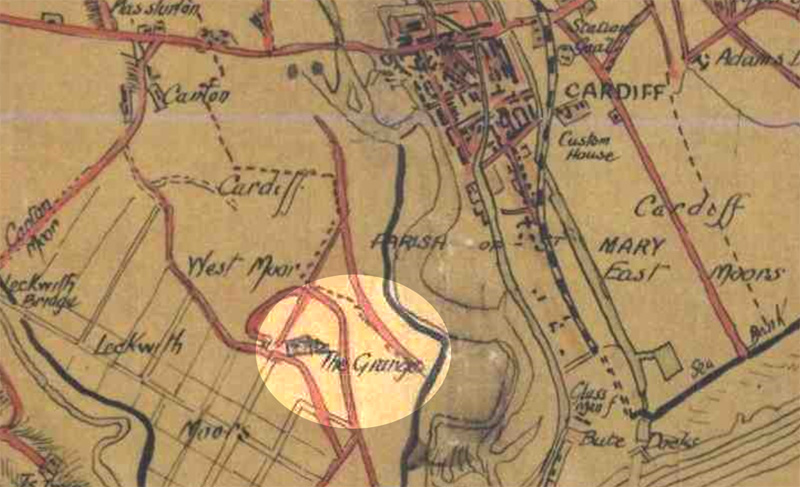
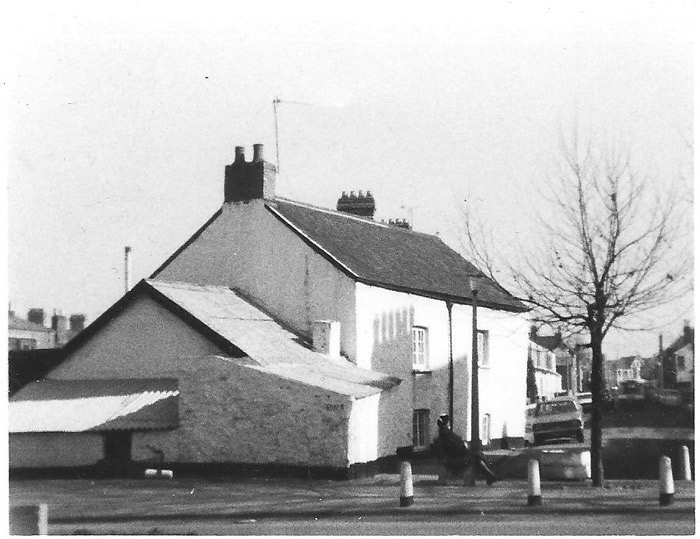
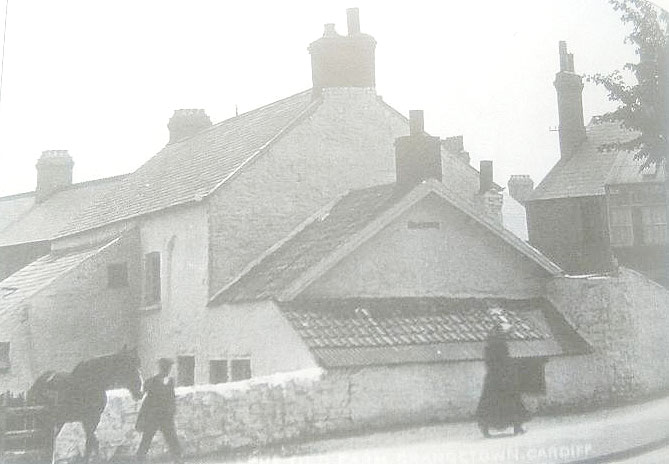
A scene at the dairy farm in 1913
More discoveries at Grange Farm come to light
We bought Grange Farm in the year 2000 from Peter Farr,
whose family had lived here for over 150 years. Our intention was to restore the
house and uncover as much of its history as possible while at the same time modernising
it in a sympathetic way, to make it a comfortable family home.
We started work on
the house in 2001 and while we've made lots of changes over the years (including
extra bedrooms and bathrooms) there's still plenty left to do! Historic features
that we've uncovered include the well that provided the water supply to the
Farm and two inglenook fireplaces. The larger downstairs fireplace has a huge stone lintel and bread oven
(above left), while the smaller upstairs fireplace has a big oak lintel
(right). We have also restored the oak beams in the downstairs ceilings (pictured left) and uncovered a Lias blue flagstone floor in part of the house, when we lowered
the floor level downstairs. Other interesting historic features include a Tudor
arched stone doorway (above right), which now contains a leaded glass panel,
as it's no longer in use as a door.
Although Grange Farm has some 16th century features (such as the arched doorway
mentioned above and the fireplaces) we think these are later additions and that
the house itself is of medieval origin. There are remains of large arched windows
spanning two storeys in the stonework, suggesting the original building was
double height and that it may have been converted to a two storey building in
the 16th century when the fireplaces were built. On one wall there is a medieval stone tracery window such as you see in church
buildings (above left), which also hints that the house may have been
one of the original monastic grange buildings.
As Grange Farm is a Grade II listed building there are special conditions
that apply to any building work and during one phase of the restoration there
was a condition that we employ an archaeologist to carry out a "programme
of archaeological investigation". So we commissioned Monmouth Archaeology
to conduct the work, which involved excavating a series of trial holes before
the main ground works started and then excavating in the area of foundations
for the extension (see photo above right). Medieval and later pottery and roof files were uncovered by the archaeologists,
although no significant structural remains or other archaeological building
features were found. The ridge roof tiles (above left) are examples of
the earliest locally glazed pottery, dating from the first half of the 13th
century, so were presumably on the roof of the original monastic buildings.
The archaeologists also found stone roof slates (above right) that would
have been the original roof covering. The pottery finds included fragments of medieval jugs and cooking pottery
as well as bowls and slipware dating from the 17th-18th centuries. They also
uncovered sheep bones, bovine horns and iron nails. When we were digging up
the floors inside the farm we found many later items including pieces of 19th
century tobacco pipes (see above).
We feel really privileged to live in such
an historic building and one that is responsible for Grangetown getting its
name.
Fiona, Nigel and Lily
© Grangetown Community Action and webmaster 2017